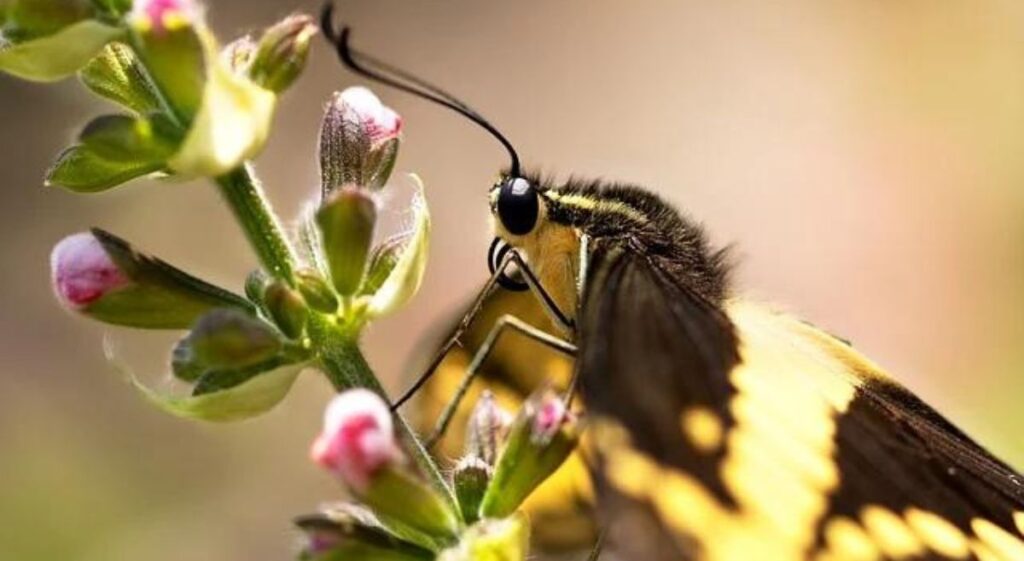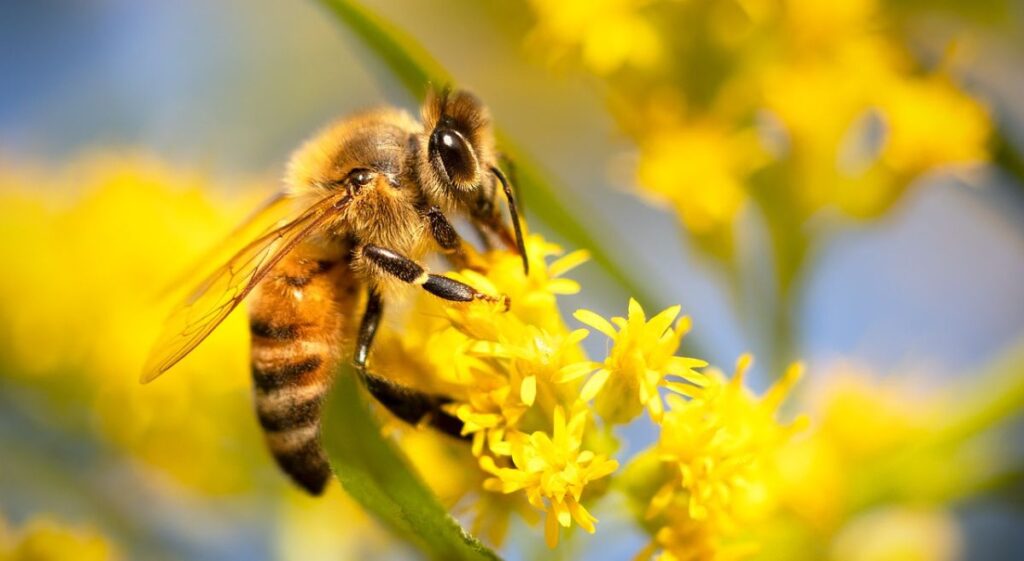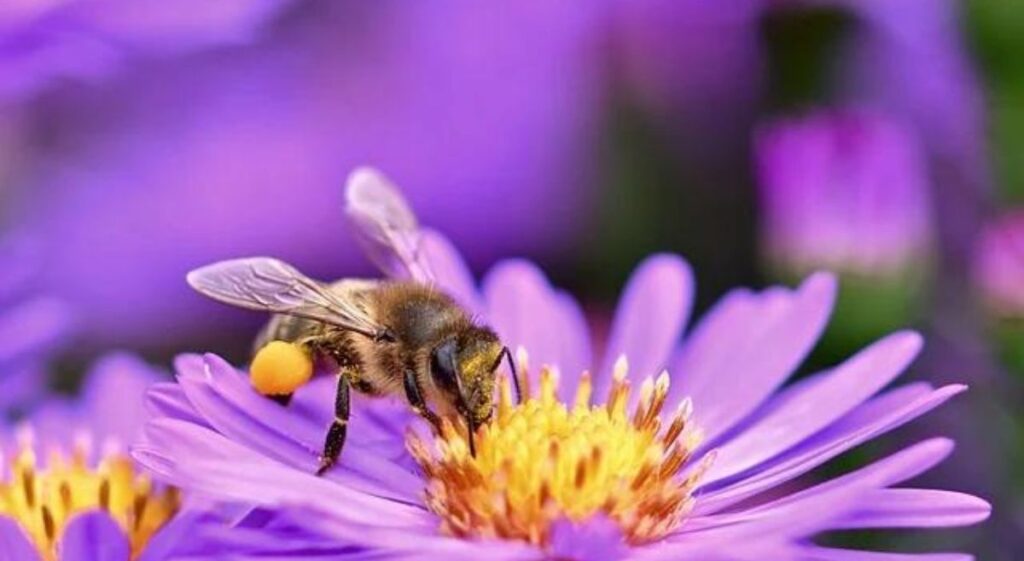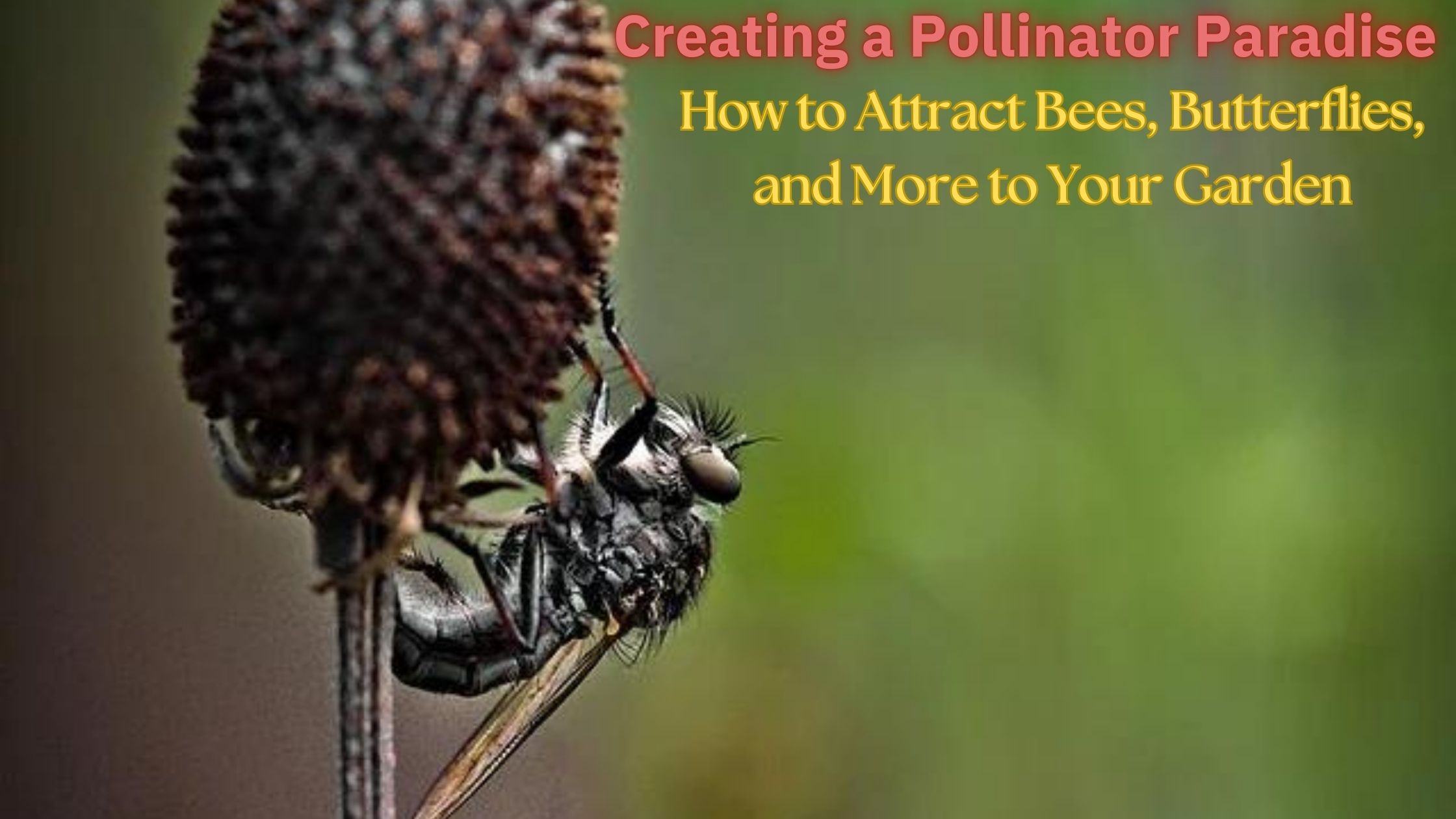Introduction:-
Creating a Pollinator Paradise: How to Attract Bees, Butterflies, and More to Your Garden

In recent times, pollinator gardens have emerged as a crucial component of sustainable gardening practices. Their significance extends beyond aesthetics; these gardens actively support bees, butterflies, and other beneficial insects, fostering a flourishing ecosystem. By establishing a pollinator paradise within your garden, you not only contribute to the preservation of these vital creatures but also create a vibrant, thriving outdoor haven for yourself..
Why Pollinator paradise Matter
Creating a “Pollinator Paradise” in your garden is crucial for a multitude of environmental, agricultural, and ecological reasons. Here’s why it matters:
1. Pollination and Food Production
- Essential for Crop Yields: Bees, butterflies, birds, and bats play a vital role in pollinating approximately 75% of flowering plants, including many fruits, vegetables, and nuts. Without them, crop yields necessary to feed the world would be significantly reduced.
- Economic Impact: Pollinators contribute billions of dollars to the global economy by enhancing crop production. Crops that rely on pollination have a significantly higher value than those that do not.
2. Biodiversity and Ecosystem Health
- Maintaining Biodiversity: Pollinators are critical to maintaining the biodiversity of ecosystems. They facilitate the propagation of a wide variety of plant species, which in turn supports a diverse array of wildlife, including humans.
- Supporting Ecosystem Services: Healthy ecosystems, sustained by pollinators, provide essential services such as clean air and water, carbon sequestration, and soil health.
3. Environmental Stability
- Preventing Ecosystem Collapse: The absence of pollinators can trigger a cascade of effects that destabilize ecosystems. Plants that rely on pollinators may decline, leading to the loss of habitat and food sources for other species.
- Adaptation to Climate Change: Pollinators contribute to ecosystem resilience in the face of climate change. Diverse plant communities, supported by pollinators, can better withstand and adapt to environmental changes.
4. Cultural and Aesthetic Value
- Cultural Significance: Many cultures worldwide have strong connections to pollinators, which are featured in folklore, religious practices, and art. The presence of pollinators and their supporting plants enriches cultural heritage.
- Enhancing Garden Beauty: Pollinators bring movement, color, and vitality to gardens. A garden filled with bees, butterflies, and hummingbirds is vibrant and dynamic, offering joy and a sense of connection to nature.
5. Threats to Pollinators
- Habitat Loss: Urbanization, deforestation, and agricultural expansion have resulted in the loss of natural habitats for pollinators.
- Pesticides and Chemicals: The widespread use of pesticides, herbicides, and other chemicals is detrimental to pollinators, leading to population declines.
- Climate Change: Changes in climate can disrupt the life cycles of pollinators and the plants they rely on, causing mismatches in timing that affect pollination success.
6. Human Responsibility
- Protecting Future Generations: By creating pollinator-friendly habitats, we ensure that future generations inherit a healthy and sustainable environment.
- Educational Opportunities: Gardens that attract pollinators serve as living classrooms, where people of all ages can learn about the significance of these species and the need to protect them.
7. Personal and Community Benefits
- Health and Well-Being: Engaging with nature, through activities like gardening, has been shown to improve mental and physical health. A pollinator-friendly garden can provide a peaceful, restorative space.
- Community Building: Creating pollinator gardens in community spaces can bring people together, fostering a sense of shared purpose and connection to the environment.
In summary, pollinator paradises are essential not only for the well-being of individual gardens but also for the broader environment and food systems. By supporting pollinators, we contribute to the stability, diversity, and beauty of our planet.
How can I create a bee-friendly garden?
To create a garden that supports bees and ensures their flourishing, consider the following steps:

1. Plant Selection:
- Choose native plants well-adapted to your region, providing essential nectar and pollen.
- Include a variety of flowers that bloom throughout the year, from early spring to late fall, to provide a continuous food source.
- Opt for single-petal flowers, such as sunflowers and black-eyed Susans, as they are more accessible to bees.
2. Water Sources:
- Provide shallow water sources, such as birdbaths or dishes filled with water and pebbles, allowing bees to land safely and drink.
3. Responsible Gardening Practices:
- Avoid chemical pesticides, herbicides, and fungicides, opting for organic practices and natural pest control methods like companion planting.
- Implement Integrated Pest Management (IPM) strategies, minimizing harm to bees through monitoring and targeted solutions.
4. Nesting Sites:
- Leave areas of bare soil in sunny spots for ground-nesting bees.
- Install bee hotels, simple structures made of wood, bamboo, or hollow stems, to provide nesting sites for solitary bees.
- Leave some dead wood in your garden as a habitat for wood-nesting bees.
5. Color and Shape Diversity:
- Plant flowers of various colors, especially blue, purple, yellow, and white, as bees are attracted to a range of hues.
- Include flowers of different shapes and sizes to attract various bee species.
6. Beneficial Weeds:
- Allow certain beneficial weeds, like dandelions and clover, to grow as early food sources for bees.
7. Bee Lawn:
- Consider planting a bee lawn with low-growing flowers mixed in with your grass, providing bees with food while maintaining a lawn-like appearance.
8. Community Involvement:
- Share your bee-friendly gardening practices with neighbors and encourage them to create bee-friendly spaces, forming a larger habitat network.
9. Untidy Areas:
- Leave a small area of your garden undisturbed with fallen leaves, twigs, and dead plants, providing shelter for bees and other beneficial insects.
By implementing these strategies, you can create a garden that not only boasts vibrant blooms but also supports the health and well-being of bees, contributing to a thriving ecosystem.
What are the best plants for attracting pollinators to a garden?

To create a thriving ecosystem in your garden, attracting pollinators like bees, butterflies, hummingbirds, and beneficial insects is paramount. Plants rich in nectar, pollen, and suitable habitats are ideal for this purpose. Here’s a practical guide to the top plants for various pollinators:
1. Plants for Bees:
- Lavender (Lavandula): Bees adore its fragrant flowers and abundant nectar.
- Sunflowers (Helianthus): A great source of nectar and pollen, making them a favorite among bees.
- Coneflowers (Echinacea): Attract a variety of bees and bloom continuously throughout the summer.
- Thyme (Thymus vulgaris): A culinary herb with flowers that draw bees and other pollinators.
- Borage (Borago officinalis): Produces beautiful blue star-shaped flowers that are rich in nectar.
2. Plants for Butterflies:
- Butterfly Bush (Buddleja): Produces large, nectar-rich flower clusters that attract butterflies.
- Milkweed (Asclepias): Essential for monarch butterflies as the sole plant they lay their eggs on.
- Lantana (Lantana camara): Bright, multi-colored flowers that attract butterflies all season long.
- Asters (Aster spp.): Late-blooming flowers provide a crucial nectar source for butterflies in the fall.
- Verbena (Verbena spp.): Clusters of small purple or pink flowers that are butterfly magnets.
3. Plants for Hummingbirds:
- Salvia (Salvia spp.): Tubular flowers in red, pink, and purple, perfect for hummingbirds.
- Trumpet Vine (Campsis radicans): Hummingbirds adore its bright orange-red trumpet-shaped flowers.
- Bee Balm (Monarda): Vibrant red, pink, or purple flowers with a tubular shape that’s ideal for hummingbirds.
- Columbine (Aquilegia spp.): Bell-shaped flowers that are particularly attractive to hummingbirds.
- Fuchsia (Fuchsia spp.): Hanging flowers perfect for hummingbirds, especially in shaded areas.
4. Plants for Moths:
- Evening Primrose (Oenothera biennis): Flowers open in the evening, attracting nocturnal pollinators like moths.
- Moonflower (Ipomoea alba): Large, white, fragrant flowers bloom at night, attracting moths.
- Nicotiana (Nicotiana alata): Also known as flowering tobacco, it releases its scent in the evening to attract moths.
5. Plants for General Pollinators:
- Zinnias (Zinnia elegans): Brightly colored flowers that attract bees, butterflies, and hoverflies.
- Marigolds (Tagetes spp.): Easy to grow and attract many types of pollinators.
- Coreopsis (Coreopsis spp.): Drought-tolerant and blooms profusely, drawing in bees, butterflies, and other pollinators.
- Cosmos (Cosmos bipinnatus): Delicate flowers in pink, white, and purple that attract butterflies and bees.
- Black-Eyed Susans (Rudbeckia hirta): Bright yellow flowers that are magnets for bees and butterflies.
6. Plants for Hoverflies and Other Beneficial Insects:
- Yarrow (Achillea millefolium): Flat clusters of tiny flowers that attract hoverflies, bees, and other beneficial insects.
- Dill (Anethum graveolens): Produces umbrella-like clusters of tiny yellow flowers that attract hoverflies and other beneficial insects.
- Fennel (Foeniculum vulgare): Similar to dill, it’s excellent for attracting beneficial insects.
- Alyssum (Lobularia maritima): Low-growing flowers that attract hoverflies and other pollinators.
Conclusion
Transform your garden into a haven for pollinators and witness the rewards it brings to you and the environment. By thoughtfully selecting plants, providing suitable habitats, and nurturing your garden with pollinators in mind, you can attract a myriad of bees, butterflies, and other beneficial insects. These creatures will not only add vibrant beauty to your garden but also fulfill a vital role in sustaining local ecosystems. Begin with small steps, and marvel as your garden blossoms into a thriving sanctuary for pollinators.
References:
- National Wildlife Federation. “Native Plants for Wildlife.” nwf.org
- Pollinator Partnership. “Pollinator-Friendly Planting Guides.” pollinator.org
- USDA. “Why Pollinators Matter.” usda.gov
